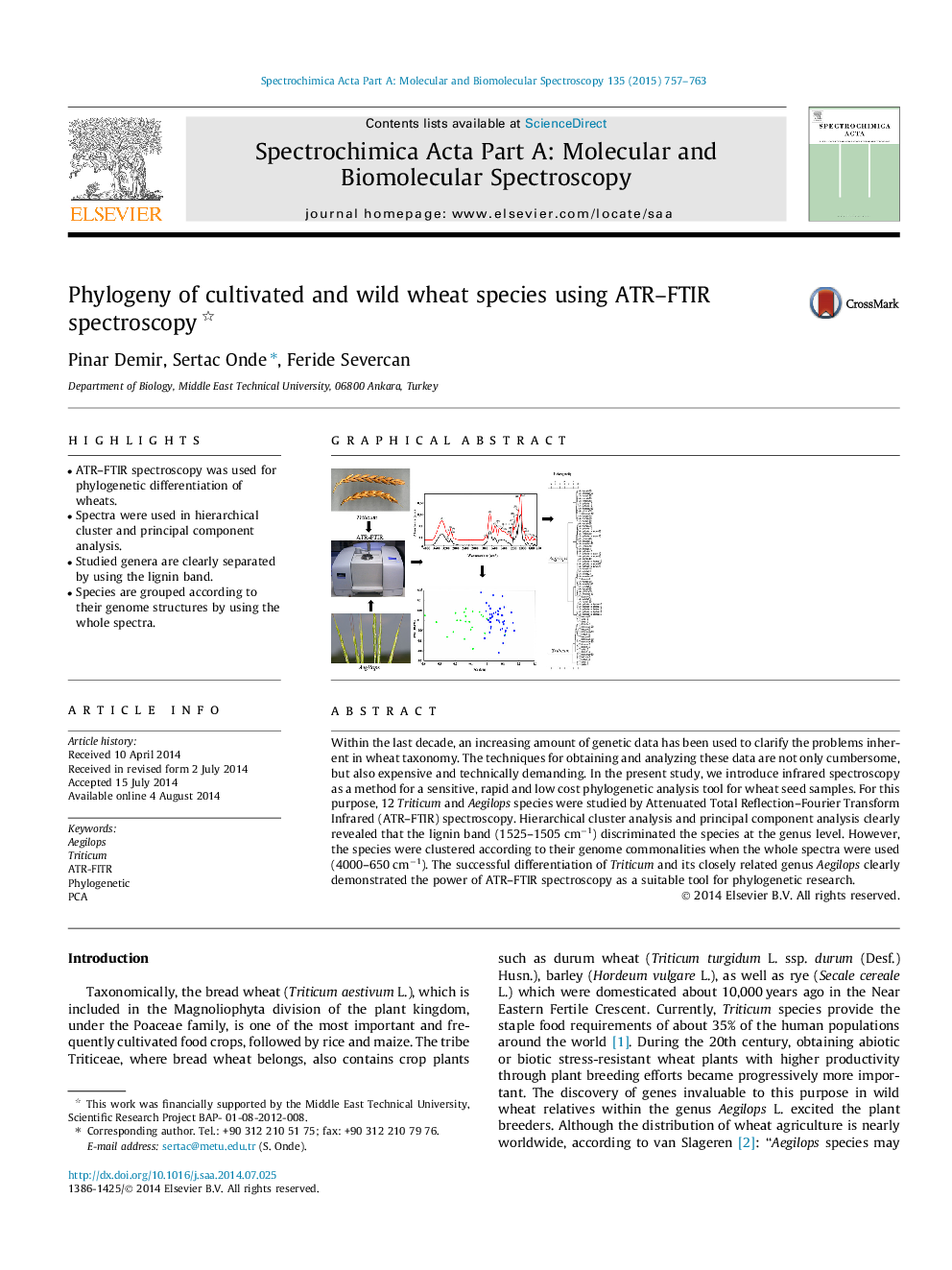| Article ID | Journal | Published Year | Pages | File Type |
|---|---|---|---|---|
| 1233247 | Spectrochimica Acta Part A: Molecular and Biomolecular Spectroscopy | 2015 | 7 Pages |
•ATR–FTIR spectroscopy was used for phylogenetic differentiation of wheats.•Spectra were used in hierarchical cluster and principal component analysis.•Studied genera are clearly separated by using the lignin band.•Species are grouped according to their genome structures by using the whole spectra.
Within the last decade, an increasing amount of genetic data has been used to clarify the problems inherent in wheat taxonomy. The techniques for obtaining and analyzing these data are not only cumbersome, but also expensive and technically demanding. In the present study, we introduce infrared spectroscopy as a method for a sensitive, rapid and low cost phylogenetic analysis tool for wheat seed samples. For this purpose, 12 Triticum and Aegilops species were studied by Attenuated Total Reflection–Fourier Transform Infrared (ATR–FTIR) spectroscopy. Hierarchical cluster analysis and principal component analysis clearly revealed that the lignin band (1525–1505 cm−1) discriminated the species at the genus level. However, the species were clustered according to their genome commonalities when the whole spectra were used (4000–650 cm−1). The successful differentiation of Triticum and its closely related genus Aegilops clearly demonstrated the power of ATR–FTIR spectroscopy as a suitable tool for phylogenetic research.
Graphical abstractFigure optionsDownload full-size imageDownload as PowerPoint slide
